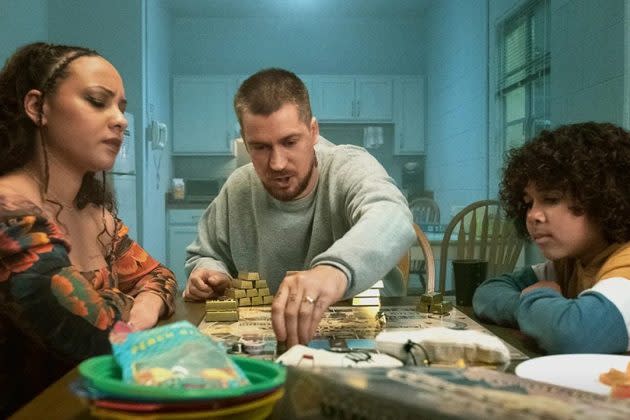How the ‘Blindspotting’ Team Addresses Race Through Dance
- Oops!Something went wrong.Please try again later.
- Oops!Something went wrong.Please try again later.

SPOILER ALERT: This recap contains spoilers for Season 2, Episode 3 of “Blindspotting,” now streaming on Starz.
The latest episode of Starz’s “Blindspotting” forces Ashley (Jasmine Cephas Jones) and Miles (Rafael Casal) into parenting mode after their young son Sean, played by Atticus Woodward, uses the N-word.
More from Variety
Titled “N*ggaz and Jesus,” Ashley takes Sean to visit Miles (Rafael Casal) who is serving a five-year sentence at San Quentin State Prison. It’s a tough but necessary conversation as they teach Sean why using the word is wrong.
The moment comes during a conversation when Sean unexpectedly blurts the word out, but Sean presses and they are forced to discuss it with the boy.
Producer Jess Wu Calder stepped in to make her directorial debut with the episode and says it was “the most terrifying thing I’ve ever done.” In the script, Calder explains the line said, “Sean learns about the history of the N-word through dance.”
Choreographer Jon Boogz was called on to craft the story in a dreamlike dance sequence. Says Boogz, “We came up with this idea to do this representation through three different generations: slavery, civil rights and modern day.”
It was important for both to get the inherited emotional trauma that this word has caused over the decades, explains Calder. But it was also necessary to look at it from what this world would look like to a 7-year-old being told all this information, while maintaining that this was from a child’s point of view and learning history. Says Calder, “It could only ever be information overload. As much as what his brain is trying to process and what he’s hearing.” They used a magical moving bed and walls moving around the stage which would move Sean through the different historical time periods.
Cinematographer Tarin Anderson used light intentionally to blink in and out. “It was to reflect Sean’s brain synapses,” says Calder who worked closely with the D.P. By the end, red and blue were used as bold colors, not just to make the scenery pop, but to show the intensity of what the word represents.
As the sequence evolved to show workers picking cotton, the dancers swayed in sync. “It was to match the sorrow they feel having to live in those conditions.” Boogz explains, “Those dancers there needed to match what was happening. In reality, you’re going to be sold away. With the buyers, we wanted them to have this pompous, arrogant, privileged demeanor about their movement.” So, he crafted sharp moves with arrogance, with every single character telling a story.
For Boogz, it wasn’t just grabbing the right group of dancers. He says, “I wanted the dancers who could understand storytelling, intention and emotion.”
Boogz explains there was no blank movement. He says, “With something that’s important as this, if you don’t have the emotion behind it, it’s just choreography.”
To depict the emotions of modern times, Boogz thought of George Floyd and Eric Garner. “I had my hands up, and Lil Buck (dancer and fellow choreographer) is in a chokehold. We took the modern issues that we see in our lifetime, and put that into in dance form.”
Watch the scene below.
Best of Variety
This 'Fast and Furious' Arcade Cabinet Allows You to Step Behind the Wheel as Dom Toretto
Emmy Predictions: TV Movie - 'Fire Island' and 'Reality' Bring Fresh Takes to the Category
Sign up for Variety’s Newsletter. For the latest news, follow us on Facebook, Twitter, and Instagram.
